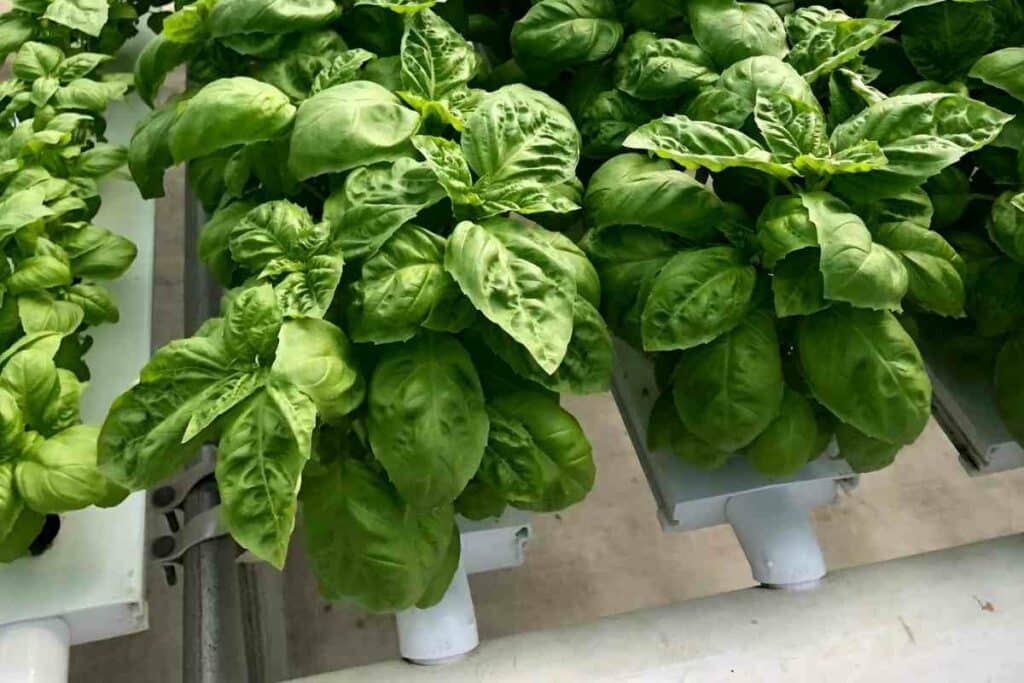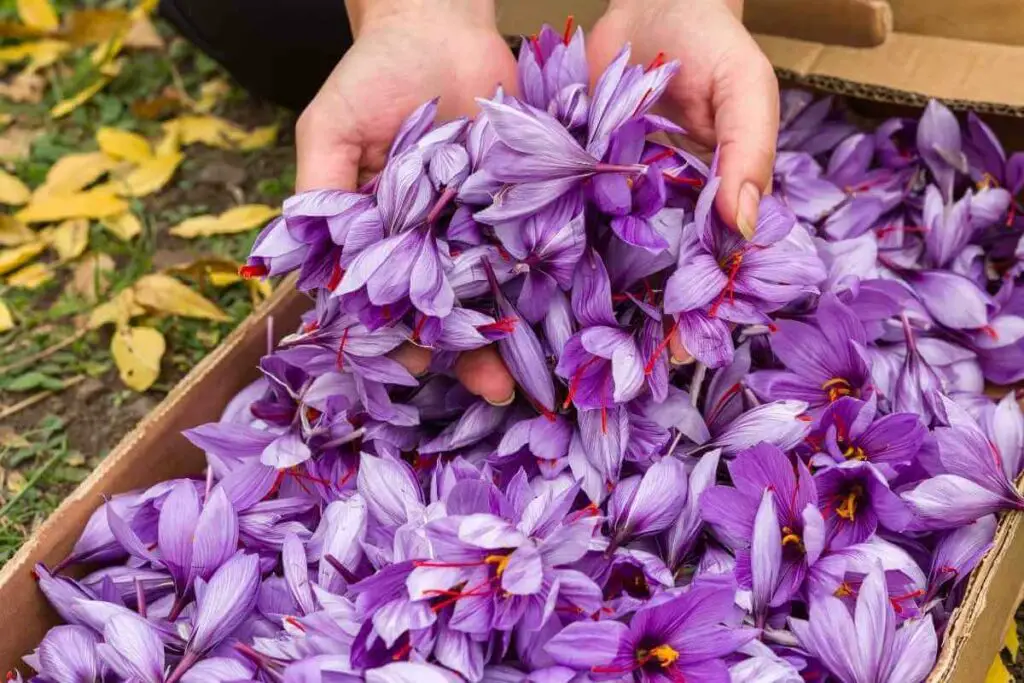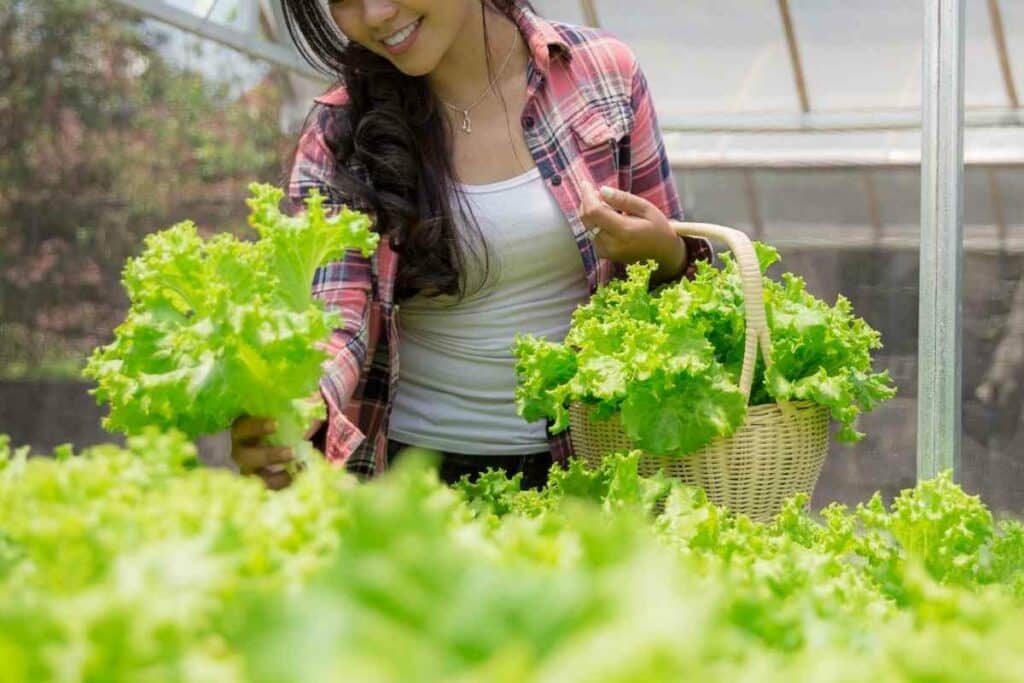Over the past few years, hydroponic growing has surged in popularity.
There are various reasons why many are switching to this soil-less option for growing vegetables, fruits, and herbs.
However, the individual reasons don’t really matter.
The only thing that matters is that it’s a viable option for growing your own food.
While not all vegetables thrive in a hydroponic environment, there are several vegetables that can be grown in this way. We will talk about 9 of them below: lettuce, spinach, kale, tomatoes, cucumbers, radishes, beans, peppers, and celery.
Best Vegetables for Hydroponic Gardens
When choosing which vegetables to grow, keep in mind that some require more effort than others.
However, all of these are worth adding to your garden.
Let’s explore each one of these options below.

Lettuce
Leaf lettuce is a great option for hydroponic gardening.
You only need a simple system, and they don’t require a lot of attention.
As the lettuce grows, you can harvest the outer leaves, and the inner leaves will grow to replace them. This means that you’ll have a prolonged crop of fresh lettuce whenever you want it.
It grows well in DWC, Ebb, and Flow, and NFT systems and best at cooler temperatures, between 50°F to 70°F.
It can bolt and taste bitter if conditions get too hot. Additionally, lettuce prefers high levels of nitrogen.
Kale
Kale is popular due to the health benefits it provides, as well as the wonderful flavor.
You can germinate it from seeds, and when it begins to grow, it can withstand a range of temperatures from 45°F to 85°F.
The process takes approximately 10 weeks, but you can pluck 30% of the leaves. New leaves will replace those, which increases the time it can stay in the garden.
What We Like: One advantage to kale is that it’s not a target for pests, but it can develop powdery mildew.
Spinach
Spinach is another crop that prefers cooler temperatures and can be grown right alongside lettuce and kale.
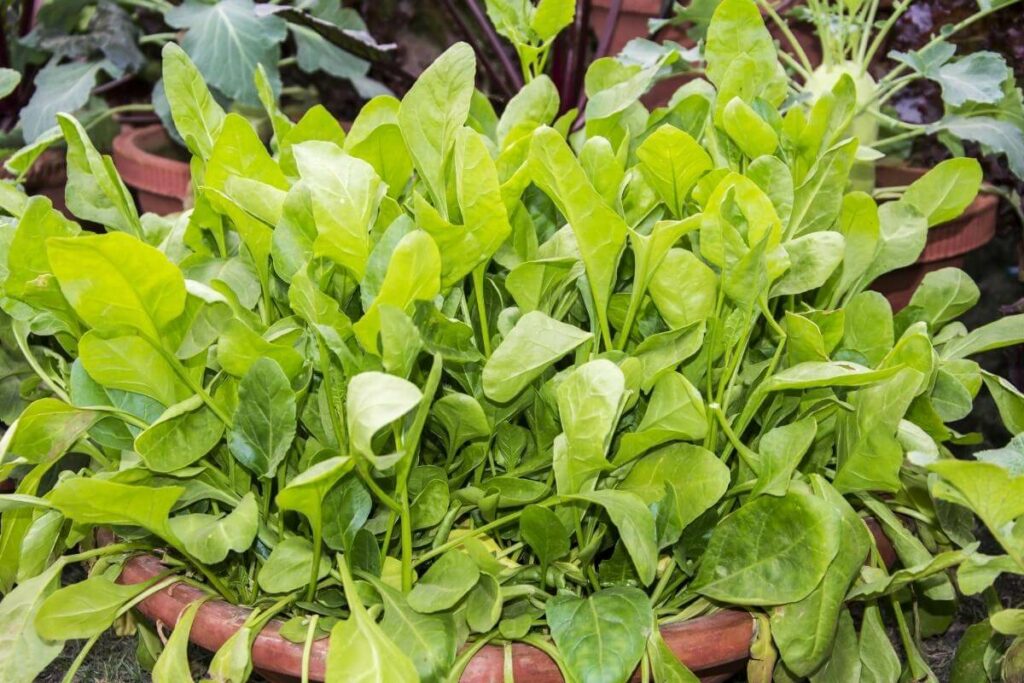
If the temperature gets over 75°, it can cause damage to the plant. This is another one you can grow from seed, and most growers will place the seeds in the fridge for 3 weeks before they plant them.
This creates a hardier, healthier plant.
While spinach does grow best in a cool environment, it does enjoy around 12 hours of light each day. Consider lighting that doesn’t put off much heat.
When harvest time comes, decreasing the temperature will provide you with sweeter spinach. Of course, this will slow the growth- but it’s better to opt for quality instead of quantity.
Most systems are adequate for growing spinach, but make sure to plant them a few weeks apart so that you can continually harvest them.
Cucumbers
Adding cucumbers to your hydroponic garden can be rewarding.
These veggies love:
- warmth
- plenty of moisture
- nutrients
This is potentially one of the highest-yielding plants that you will grow.
Ideally, temps should be kept just above the upper range that leafy greens prefer. This means that they grow best at 60°F to 82°F. These plants prefer a pH of 5.8 and an EC between 1.8 and 2.
The seeds can be expensive, but once you see the yield one seed provides, it’s worth the cost.
The hardest thing about growing cucumbers is that they are a vining plant and need a trellis.
This means that a bucket hydroponic system is ideal because there’s plenty of grow bed material to support the plants.
Tomatoes

Tomatoes are a warm-weather plant and enjoy temperatures similar to those that cucumbers thrive in, ideally, on the higher end of the range of 58°F to 82°F.
However, these plants prefer an EC of 2 to 5. This means that they will have to be in a separate system.
Their ideal pH level is between 5.5 and 6.5.
They can be grown from seeds, but cuttings or seedlings are best because it takes some time to get from seeds to a fruiting plant.
Quick Tip: The most popular tomatoes are the vining varieties and will need a trellis, as cucumbers do.
Radishes
While root vegetables are not typically ideal for hydroponic growing, radishes are different.
They are a cool-weather crop, so they will grow well with the greens listed in the beginning.
Additionally, they are one of the easiest plants to grow and mature rapidly.
They need a pH of between 6, and 7 and temperatures need to be between 50°F and 65°F, and EC should be between 1.6 and 2.2.
Ideally, they should be provided with 8 to 10 hours of light each day.
Radishes, unlike tomatoes, are better grown from seeds, and germination to harvest can take as little as 3 weeks.
By staggering your planting, you can have fresh radishes all year long.
Beans
Almost every kind of bean can be grown hydroponically.
While there are hundreds of varieties, the most common are bush beans, pole beans, runners, and string beans.
All of these are low maintenance and highly productive. If you choose a vining variety, you’ll need to provide trellises.
Beans germinate quickly when growing from a seed. You can see growth in two weeks or less, depending on the variety.
The good thing about beans is that they self-pollinate, so the grow bed material should be loose.
Finally, beans don’t require many nutrients, and when you space your plantings apart, you’ll have a continuous harvest to enjoy.
Peppers
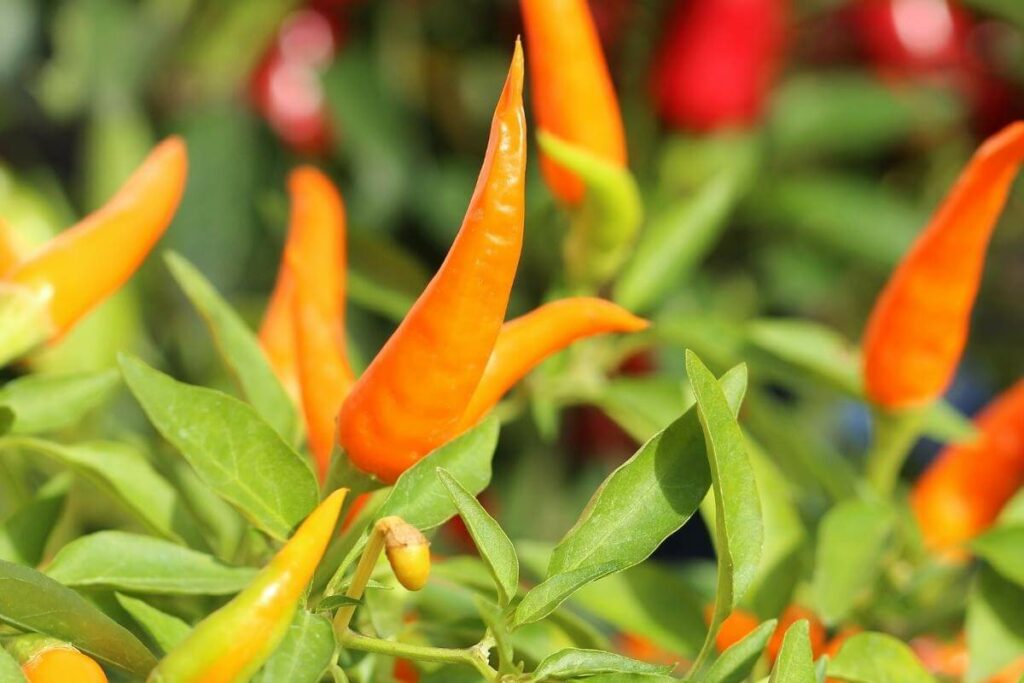
Since peppers can be grown in any season, they make a welcome addition to your hydroponic garden.
Plus, with hydroponics, you will experience a larger yield than if you were growing them with traditional methods.
Lighting should be provided for 10 to 12 hours a day and should be placed 6 to 8” above the plants.
Any closer causes scorching, and any farther has an effect on the growth of any yield.
Celery
While it’s true that celery is a little more difficult to grow hydroponically, it’s not totally impossible.
Seeds will take up to 2 weeks to germinate. A better idea is to use the stalk of celery purchased from the store.
This is a cool-weather crop, so it can be grown in the same room as greens and other such crops.
Remember This: The pH level should be 6.5, and the EC should be 1.8 to 2.4.
Conclusion
Once your hydroponic garden is running, you will be able to provide plenty of fresh veggies for your family.
Many people get started for this reason. Eventually, you may find yourself giving food away to your friends and family, or even selling it at your local farmer’s market.
Either way, these 9 vegetables are great for getting started in the world of hydroponic gardening.

